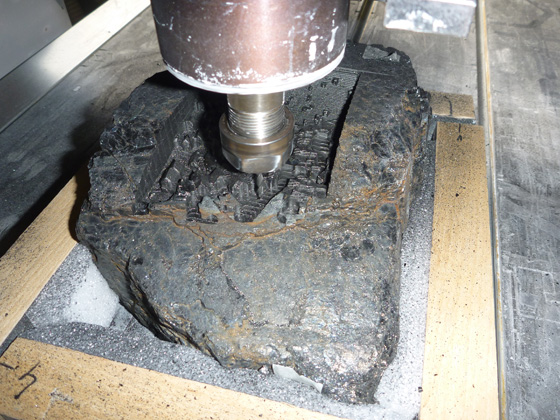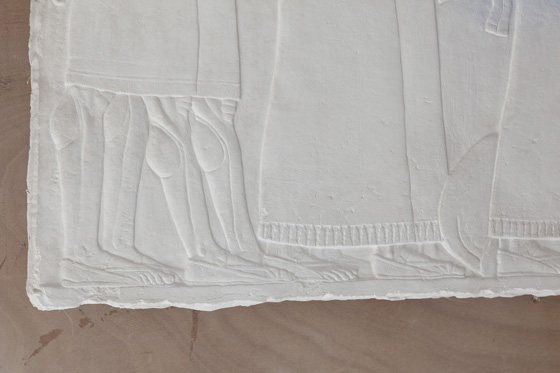English / Spanish
Factum Arte routing process allows our team of 3D designers and craftsmen to fabricate pieces in a variety of materials.
Factum Arte has routed pieces into a variety of materials, including high and low density polyurethane, wood, alabaster, aluminium, brass, bronze, plaster and anthracite. A number of both Art and Conservation projects have found in routing its optimal production process.

Marina Abramović has favoured routed alabaster as her material of choice to embody her innovative thoughts about the ephemeral and the permanent

A routed block of anthracite has opened up a whole new realm of material investigation

Routing process of the block of anthracite

The routing machine has being used in the production of facsimiles such as Polittico Griffoni

Detail of the routed surface produced for The Reconstruction of the Eastern End of the Throne Room of Ashurnasirpal II
The routing machines are computer-operated, namely with DELCAM Artcam Pro, to generate the toolpaths, and a custom software when it comes to reading the toolpaths themselves. The preferred 3D digital files when it comes to routing are 2D-cutting .dxf, or 3D-routing .stl. Careful consideration of the 3D digital files is essential: only ‘clean’ files can be routed without complications, which means that any hidden layers or geometries must be disposed of prior to sending the file to the routing machine. Additionally, Factum Arte has pioneered a novel method to route high resolution reliefs from 8-bit and 16-bit .tiff files thanks to its groundbreaking Lucida 3D Scanner, capable of recording relief information as tonal data.

Routed impression of the surface of the Hereford Mappa Mundi
View the Polittico Griffoni project page
View the The Reconstruction of the Eastern End of the Throne Room of Ashurnasirpal II project page
View the Hereford Mappa Mundi project page
© Copyright 2024 Factum Arte | Legal notice | Ts&Cs | Cookies policy | Privacy Policy